21 October 2020
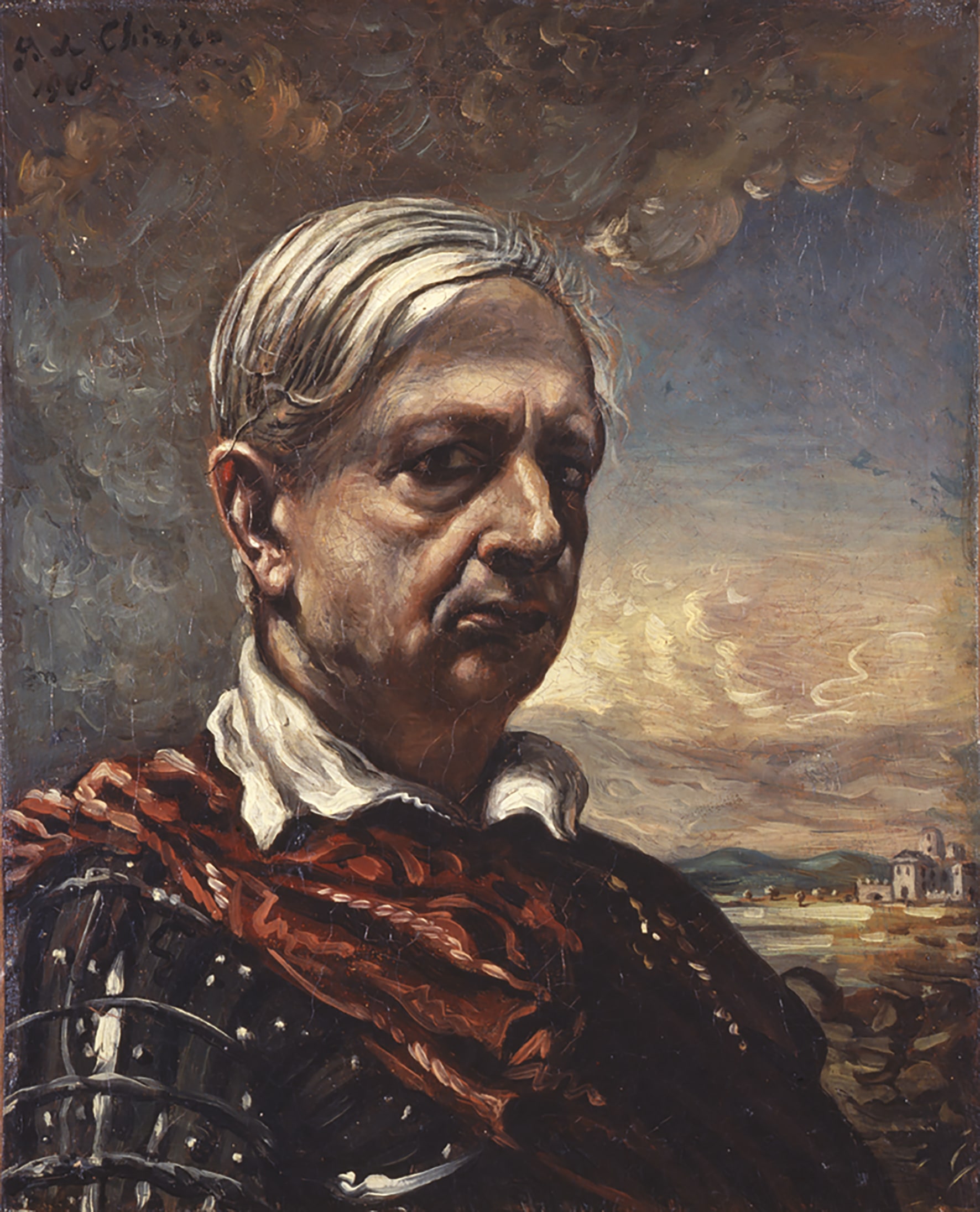 Self-Portrait in Armour, 1948
Self-Portrait in Armour, 1948
Tempera and oil on canvas
50 x 40 cm
Fondazione Giorgio e Isa de Chirico Collection, Rome (Env.65)
Giorgio de Chirico was born on July 10, 1888, in Volos, Greece, to an Italian family. His mother, Gemma Cervetto, was from a family of Genoa origin, but most likely she was born in Izmir. His father, Evaristo, was born on June 21, 1841 in the Büyükdere district of Istanbul. The family had a burial chapel in the city's Catholic cemetery; grandfather de Chirico had worked as a dragoman, official translator and ambassador of the Kingdom of Sardinia for the Russian tsars in Bab-ı Ali. After studying engineering in Italy between the years 1870-1873 for the supervision of the Istanbul-Edirne railway construction, Evaristo returned to Turkey. Later, he took part in the construction of the Thessaly railway in Greece. In August 1891, Giorgio's brother Andrea (later renamed Alberto Savinio) was born in Athens. The family, who later returned to Volos, remained there until 1899; Giorgio took his first painting lessons here as well. The family returned to the capital, and Giorgio studied at the Technical University of Athens in 1903-1906. His father died in May 1905 after years of illness.
The mother decided to leave Greece with her sons in September 1906. After two short stays in Venice and Milan, they settled in Munich. While Giorgio was studying at the Fine Arts Academy in Munich, Andrea studied music. With great interest, Giorgio studied the works of Arnold Böcklin and Max Klinger and read works by Nietzsche, Schopenhauer and Weininger. He moved to Milan in June 1909; he made paintings inspired by Böcklin in Milan. He suffered from a serious bowel disease caused by his grief over his father's death.
De Chirico moved to Florence with his mother and brother in March 1910. He made his first metaphysical picture: The Enigma of a Fall Afternoon inspired by Square of Santa Croce. He later moved to Paris in 1911 and opened his first exhibition at the Fall Hall in Paris in 1912. He developed the theme of Italy Square and started working on the Mannequin theme. Picasso and Apollinaire noticed de Chirico's work. Apollinaire, who admired the artist's paintings, wrote a review article in L’Intransigeant newspaper in October about the exhibition he organized in de Chirico's own studio. Apollinaire described de Chirico as "the most amazing painter of the young generation". The artist met his first gallery owner Paul Guillaume, Ardengo Soffici, Constantin Brancusi, Max Jacob and André Derain. The pages in which the first attempts to theorize metaphysical Art take place are from this period.
De Chirico and his brother Savinio returned to Italy in May 1915, applied to the recruitment office in Florence and were sent to Ferrara. De Chirico, who was assigned to a non-war mission, stayed in Ferrara, where he transferred his first works with the theme Metaphysical Interior to the canvas. In the same period, he made the Great Metaphysicist, Hector and Andromachhe, the Bard and the Disturbing Muse. In 1916, Filippo, who was only 20 years old, met Pisis. In 1917, he stayed for a few months in the Villa del Seminario military hospital, where Carlo Carrà was also treated. He contacted the Dada circle — Tristan Tzara and Dada 2 magazine. He kept in touch with the Parisian environment and continued to send his works of art to Paul Guillaume. Paul Guillaume organized an innovative exhibition on November 3, 1918 and exhibited the artist's paintings at the Théâtre du Vieux-Colombier as part of the exhibition. The article by Explorer Zeuksis was published in the first issue of Valori Plastici.
De Chirico opened his first solo exhibition at the Bragaglia Art House in Rome, where he moved on January 1, 1919. His article titled "We the Metaphysicists" was published. The artist's interest in the technical side of painting grew and he visited museums in Rome and Florence frequently. De Chirico explored watercolor and panel painting techniques and pastiches some of the works of Italian Renaissance masters. In 1921, he began correspondence with André Breton. He has published articles on Raphael, Böcklin, Klinger, Previati, Renoir, Gauguin and Morandi in various magazines. In 1922, an important exhibition of 55 works was opened at the Paul Guillaume Gallery in Paris. The artist participated in the 14th Venice Biennale. He met Raissa Goureviç Krol, the future Russian ballerina and future archaeologist, in Rome in 1924.
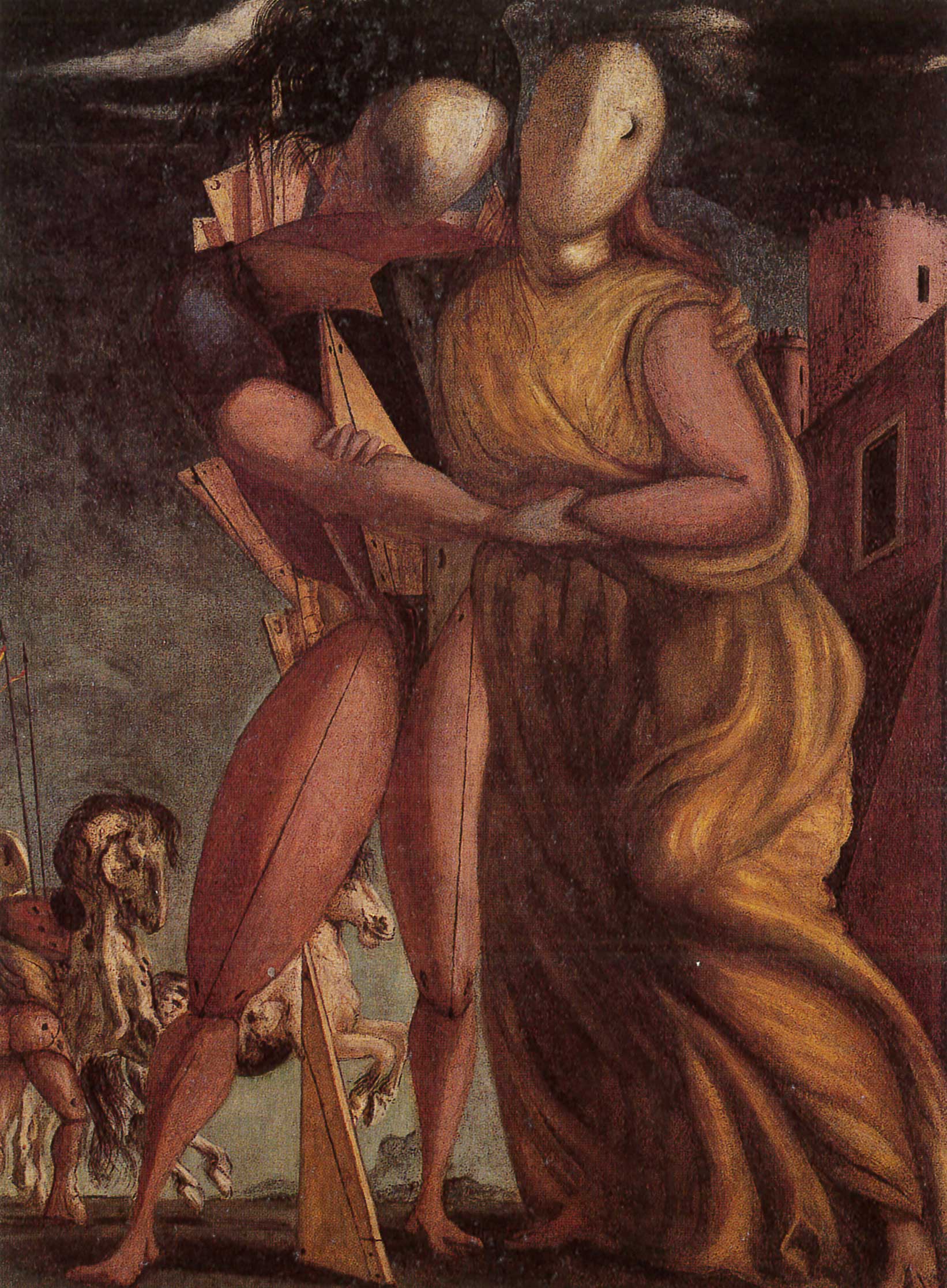 Hector and Andromache, 1924
Hector and Andromache, 1924
Oil on canvas
98 x 75 cm
Galleria Nazionale d’Arte Moderna e Contemporanea Collection, Rome
De Chirico returned to Paris and began working on the themes of Light Metaphysics and the Mediterranean Myth, creating topics such as Archaeologists, Horses by the Sea, Decor in the Valley, Landscapes in a Room, and Gladiators. He exhibited his latest works in his personal exhibition at the Léonce Rosenberg Gallery; after the exhibition, the surrealists heavily criticized these works. During this period, his break with the surrealist group became certain, and the situation would worsen in the following years. In 1928, while Jean Cocteau's Le Mystère Laïc: Essai d'étude was published in indirectly (Secular Mystery: A Direct Review) with Chirico's lithographs; The artist's Piccolo Trattato di Tecnica Pittorica (Painting Technique Handbook) was published by Scheiwiller Publishing House in Milan. In 1929, Hebdomeros, le peintre et son génie chez l'écrivain (Hebdomeros, Painter and Writer's Genius) was published. The artist designed the costumes for Le Bal, for which Sergey Diyagilev staged Russian Ballets (Monte Carlo, Paris and London).
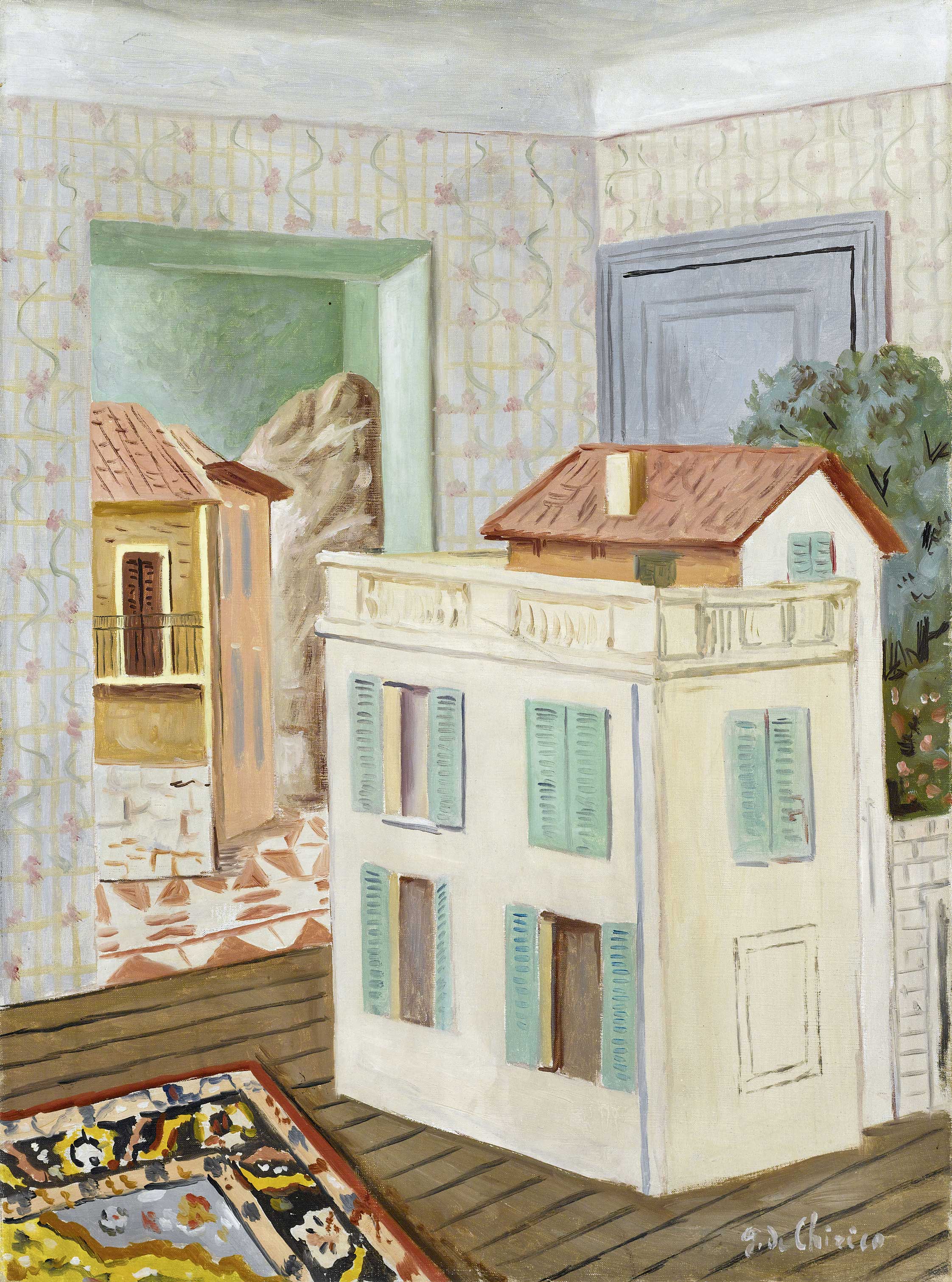 The House With The Green Shutters, 1925
The House With The Green Shutters, 1925
Oil on canvas
79 x 54 cm
Private Collection
During this period, he drew still lifes, portraits and nude fema igures with a radiant realism. Gallimard published Apollinaire's Calligrams containing sixty-six lithographs; de Chirico's Sun on the Knight theme first manifested itself here. The artist married Raissa on February 3, 1930, whose relationship was already at a dead end. In the fall, he met Isabella Pakszwer (later known as Isabella Far); his second wife, Isabella, remained the artist's lifelong life partner. De Chirico and Isabella moved to Florence and lived there for a year. De Chirico participated in the 5th Milan Triennial in 1933 and painted the monumental Italian Culture fresco for the exhibition. In 1934, he illustrated Cocteau's Mythology in ten lithographs with the theme Mysterious Pool II. He participated in the Roman Quadrennial with forty-five paintings; seven of the pictures featured this new theme. He went to New York in 1936 and exhibited his latest works at Julien Levy Gallery.
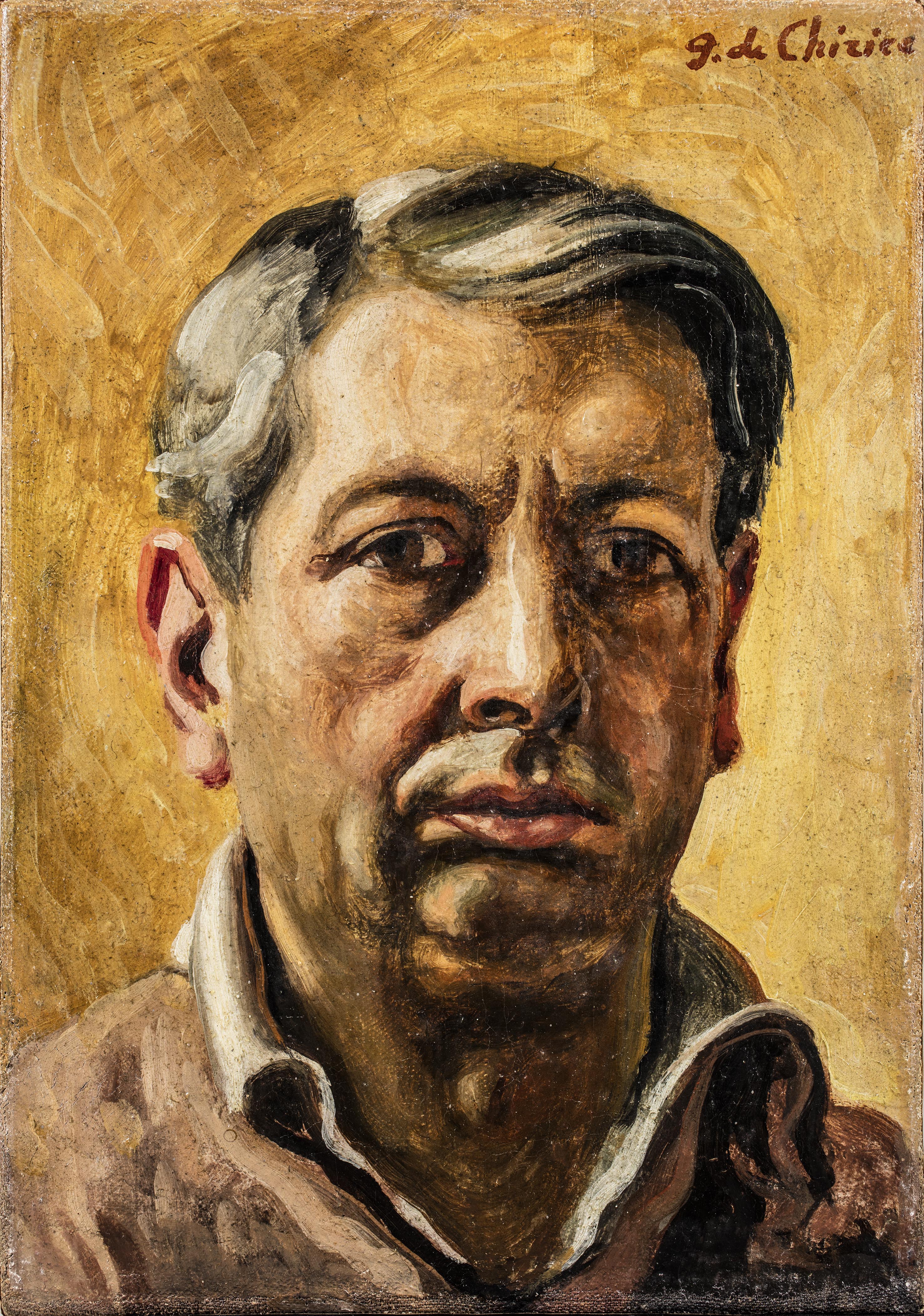 Self-Portrait, 1935
Self-Portrait, 1935
Oil on canvas
26,5 x 18 cm
Fondazione Giorgio e Isa de Chirico Collection, Rome (Env.188)
From Illuminated Naturalism to the Old Painting Technique
De Chirico's bright days in Paris came to an unexpected end when the wave of economic hardship caused by the Great Depression reached the shores of Europe. The Parisian art market and its seemingly unrelenting passion for high-priced contemporary art had been slashed like a knife. From the mid to late 1920s, the subjects the artist dealt with became difficult to find buyers; with the encouragement of Isabella Pakszwer, whom he had just met, de Chirico started to use great masters once again with a new energy, using more traditional subjects and painting techniques in her artistic production. De Chirico spent 1936-1937 in New York in search of a more productive place. After the difficult years of selling his works in Europe, the artist soon began to take advantage of the appropriate American art market. On his return to Europe he lived in Italy from time to time in Paris; the reason for this was his hatred of the fascist regime and its racist laws. In June 1937, he received the news of their mother's death from his brother.
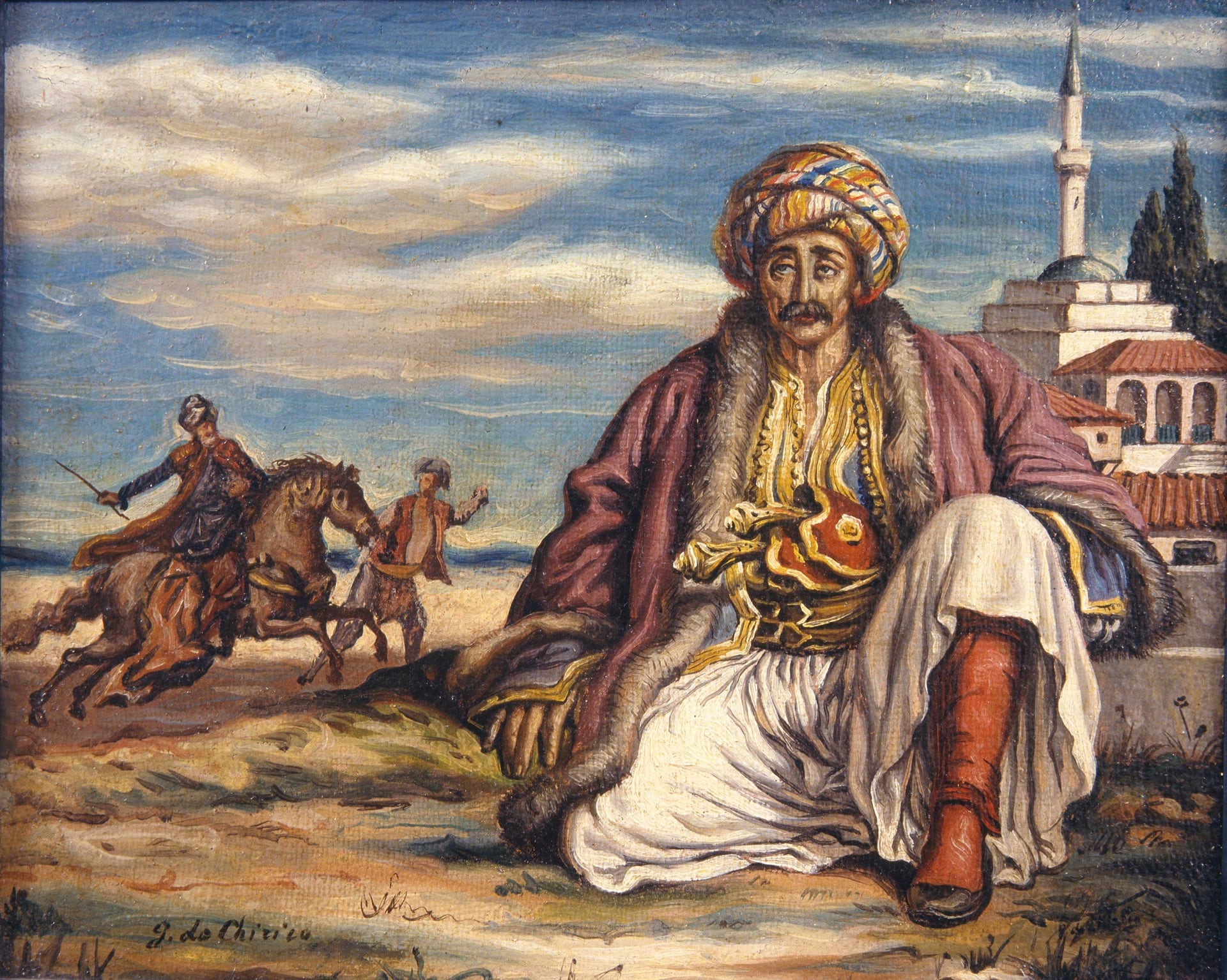 The Turk, 1935. Oil on canvas, 36,5 x 46 cm. Fondazione Giorgio e Isa de Chirico Collection, Rome (Env.234)
The Turk, 1935. Oil on canvas, 36,5 x 46 cm. Fondazione Giorgio e Isa de Chirico Collection, Rome (Env.234)
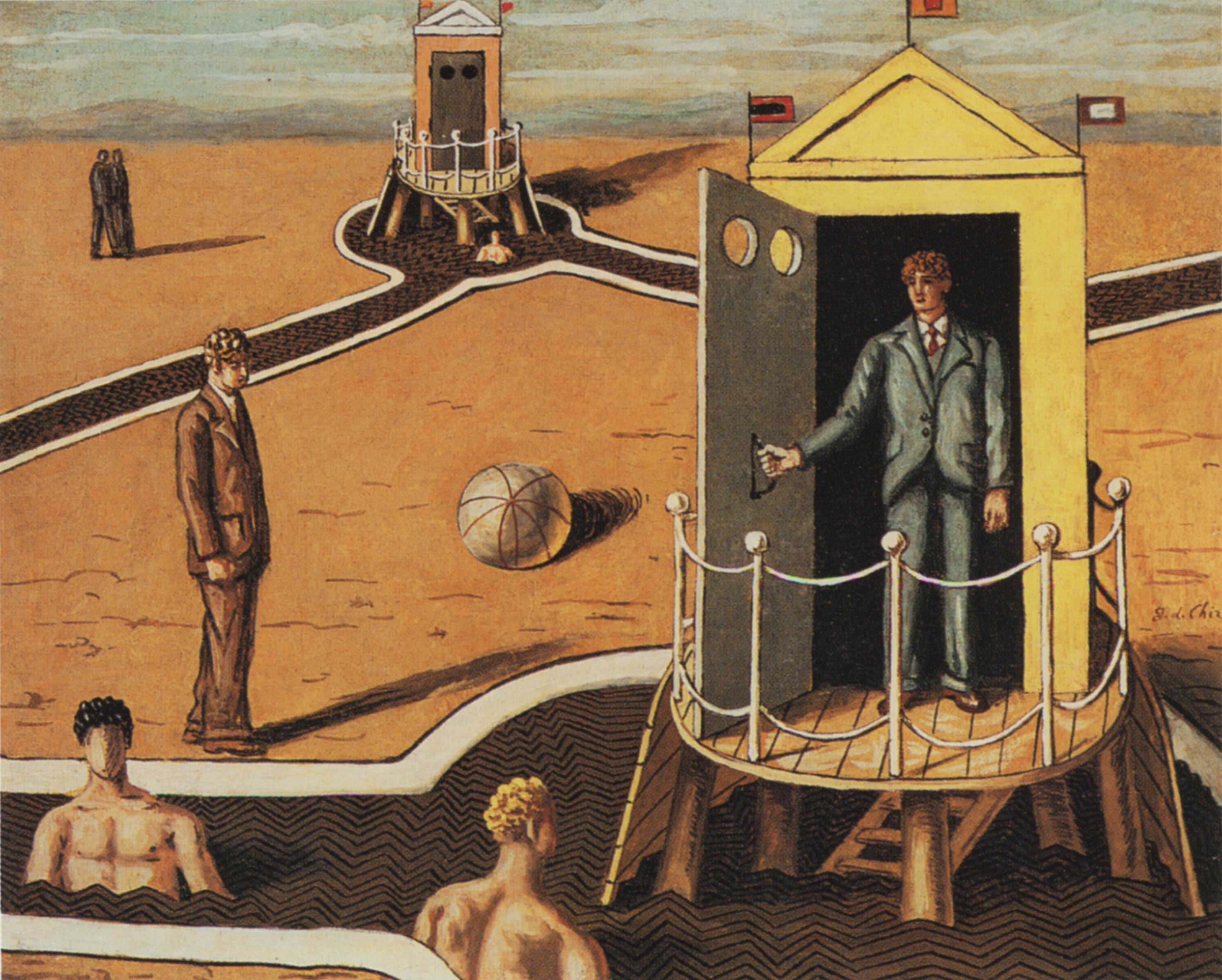 RES.14. Visit to the Mysterious Baths I, 1935 Private Collection
RES.14. Visit to the Mysterious Baths I, 1935 Private Collection
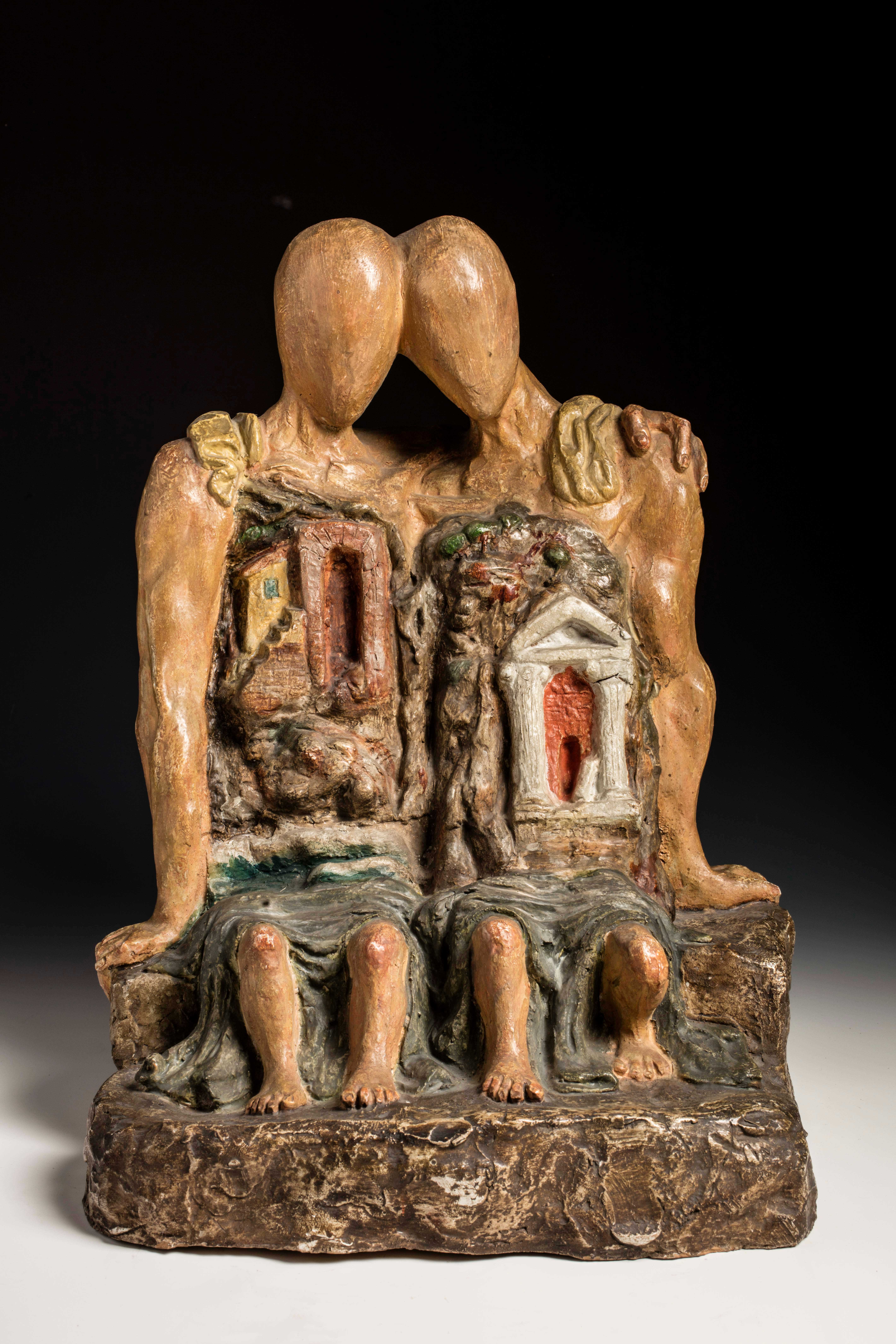 The Archaeologists, 1940
The Archaeologists, 1940
Polychrome terracotta
28 x 22 x 23 cm
Fondazione Giorgio e Isa de Chirico Collection, Rome (Env. S58) )
De Chirico’s Statues
De Chirico returned to Italy in January 1938 and settled in Milan; then, outraged by Italy's race laws, he set out for Paris. When Italy went to war, he had to return from France. He exhibited his works in the 3rd National Art Quadrenale in Rome. During the war, the Florentine antiques dealer and friend Luigi Bellini hosted de Chirico and Warsaw-born Russian-born Isabella at her home. In Florence, he began making terracotta sculptures: Archaeologists, Hector and Andromachhe, Hippolytos and his Horse and a Pietà. In 1944, he settled in Rome and in 1947 Piazza di Spagna No.31 and there, he set up his studio and home where he would live for the rest of his life.
De Chirico began dealing with sculpture at a relatively late stage of his career, in the 1940, when he was 52, and in the middle of the Second World War; he made terracotta sculptures of distinguished heroes of his artistic vocabulary — such as Ariadne, the Rider on His Horseback, and the Archaeologists. According to the artist: “If a sculpture is solid, it is not sculpture. The sculpture should be soft and warm; thus, it not only has all the softness of the painting, but also all the colors of the painting. Beautiful sculpture is always like painting. ” These early attempts to make sculptures were short-lived, and the artist returned to sculpture only in 1968, at the age of 80. This time, he made bronze casting of previous terracotta works and expanded the scope of his sculptural vocabulary with figures such as Hector and Andromakhe.
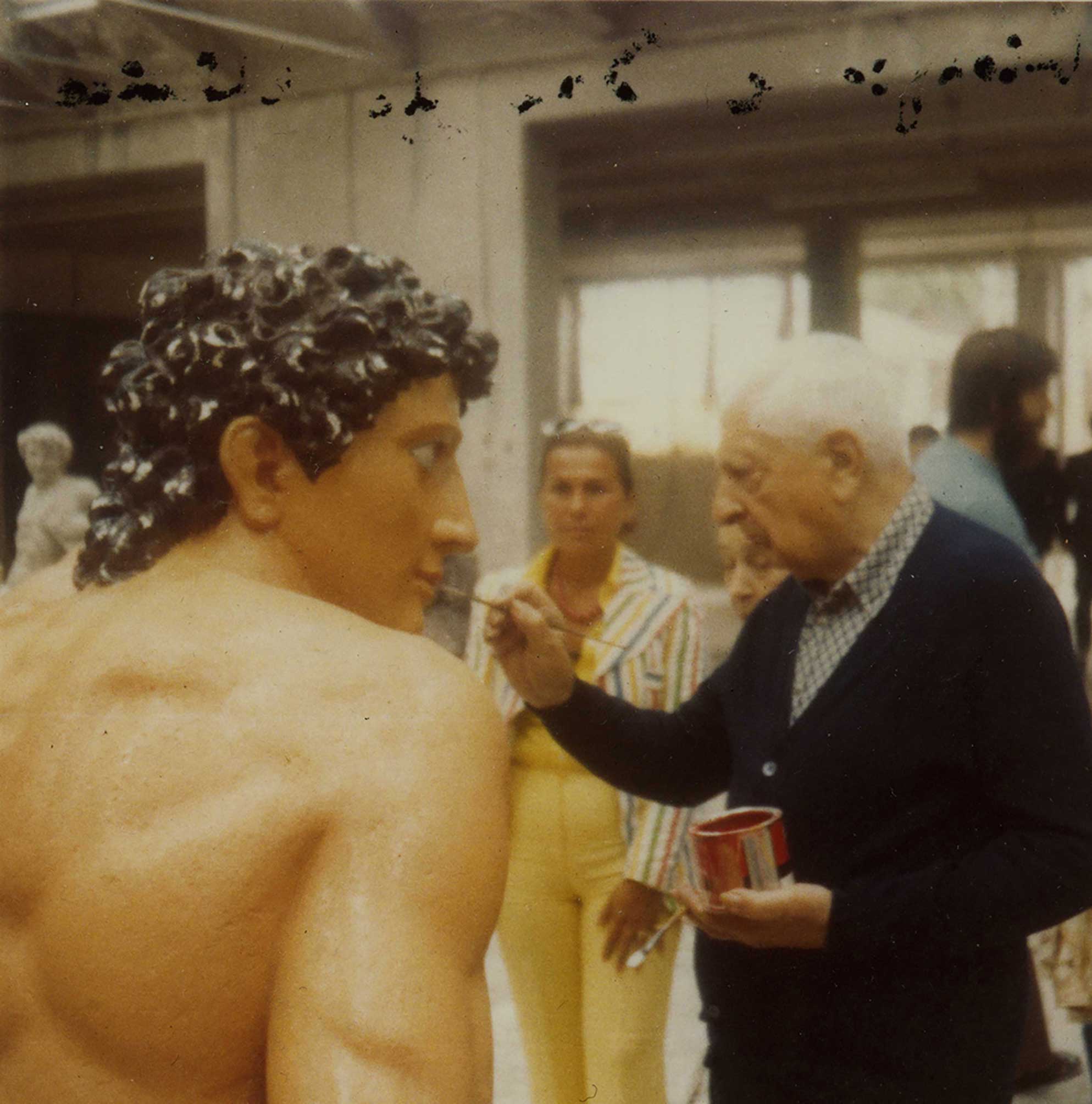 Res.16. De Chirico Painting One of the Bather Statues, 1973
Res.16. De Chirico Painting One of the Bather Statues, 1973
Metaphysics 101
In 1945, he published his autobiography, The Memoirs of Giorgio de Chirico, and the Modern Art Comedy, which consists of critical writings. At the end of 1948, he was elected an honorary member of the Royal Society of British Artists, and opened a personal exhibition in this association the following year. On May 5, 1952, his brother Alberto Savinio died.
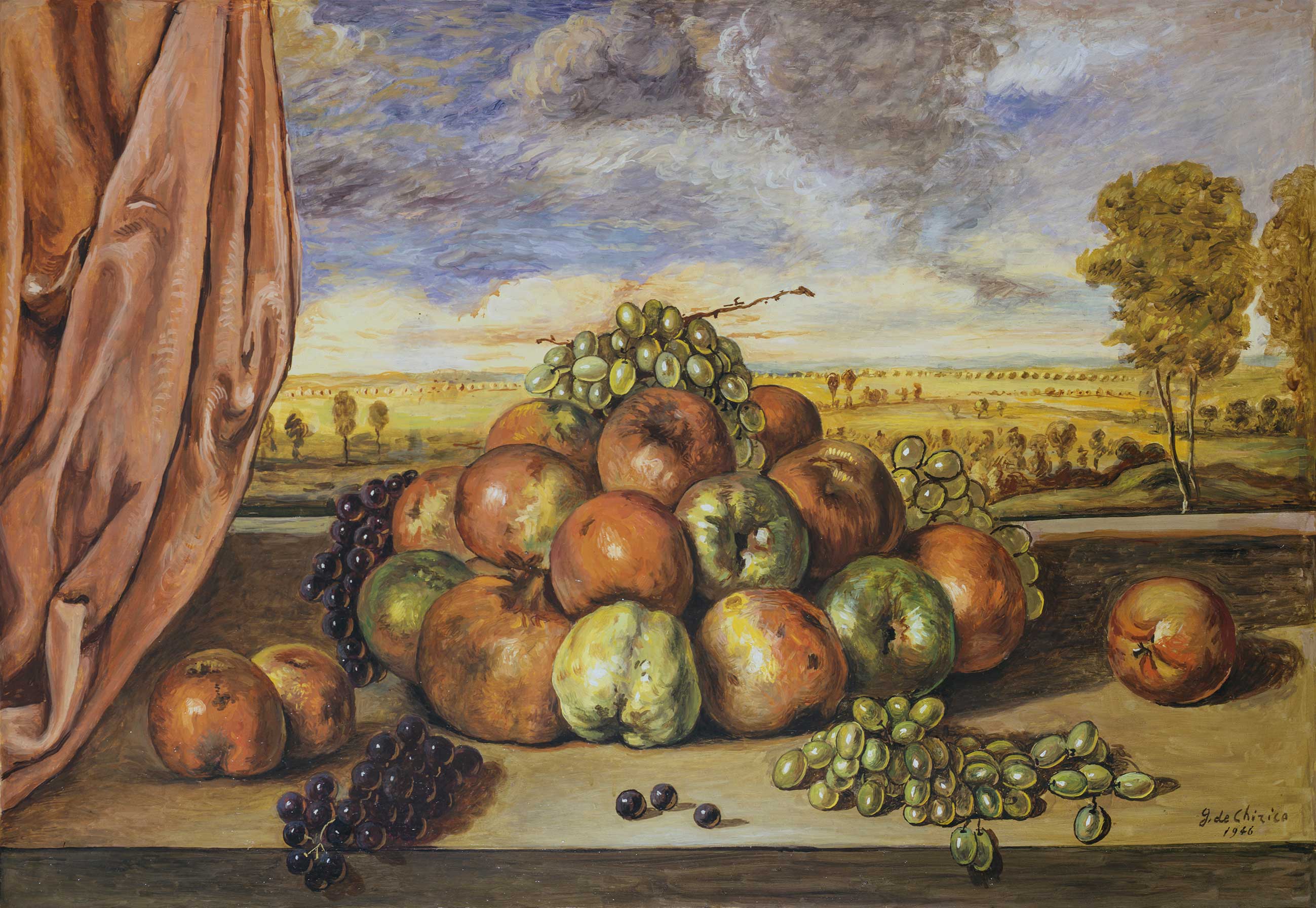 Still-Life, Fruit In a Landscape with Red Curtain, 1946. Oil on canvas, 70 x 100 cm. Fondazione Giorgio e Isa de Chirico Collection, Rome (Env.50)
Still-Life, Fruit In a Landscape with Red Curtain, 1946. Oil on canvas, 70 x 100 cm. Fondazione Giorgio e Isa de Chirico Collection, Rome (Env.50)
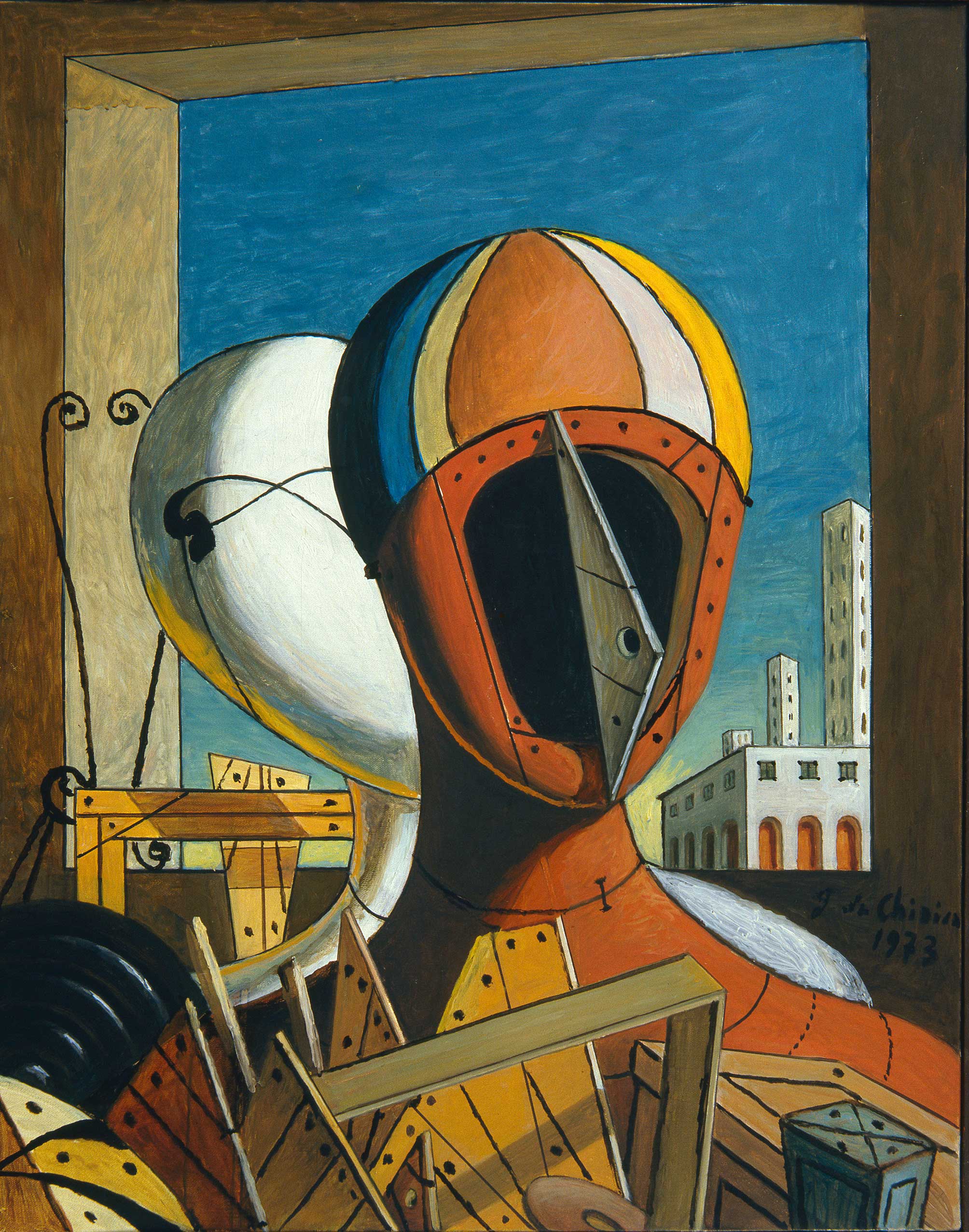 The Masks, 1959
The Masks, 1959
Oil on canvas
50,5 x 40 cm
Fondazione Giorgio e Isa de Chirico Collection, Rome (Env.333)
In 1965 he illustrated Manzoni's Fiancées novel, and in 1968 Quasimodo's translation of the Iliad. In the late 1960s, he started making bronze sculptures. In 1968, at the age of 80, he entered a research phase known as Neo-metaphysical Art. In this phase, he reconsidered the classical subjects in his works such as Italy Square, Mannequin, Metaphysical Interior, Archaeologists and the Sun in the Knight, which he presented in the 1910s, 1920s and 1930s, with bright colors and different from the disturbing mood seen in the early metaphysical period. He reinterpreted with atmospheres. With a deep sense of poetry, new subject combinations appeared in innovative spatial compositions such as Italy Square and the Metaphysical Interior, now featuring mythological figures such as Minerva and Mercurius. In 1970, an important retrospective exhibition of his art was held at the Palazzo Reale in Milan. In 1972, de Chirico through the Eyes of de Chirico was opened in the New York Cultural Center. The exhibition, which he went to New York for its opening, included 182 works from the artist's painting, drawing, sculpture and lithography collection. In 1973, he created the Mysterious Pool design at Sempione Park in Milan for the 15th Triennial. He was elected to the Academy of France in 1974. Giorgio de Chirico died in Rome at the age of 90 on 20 November 1978.
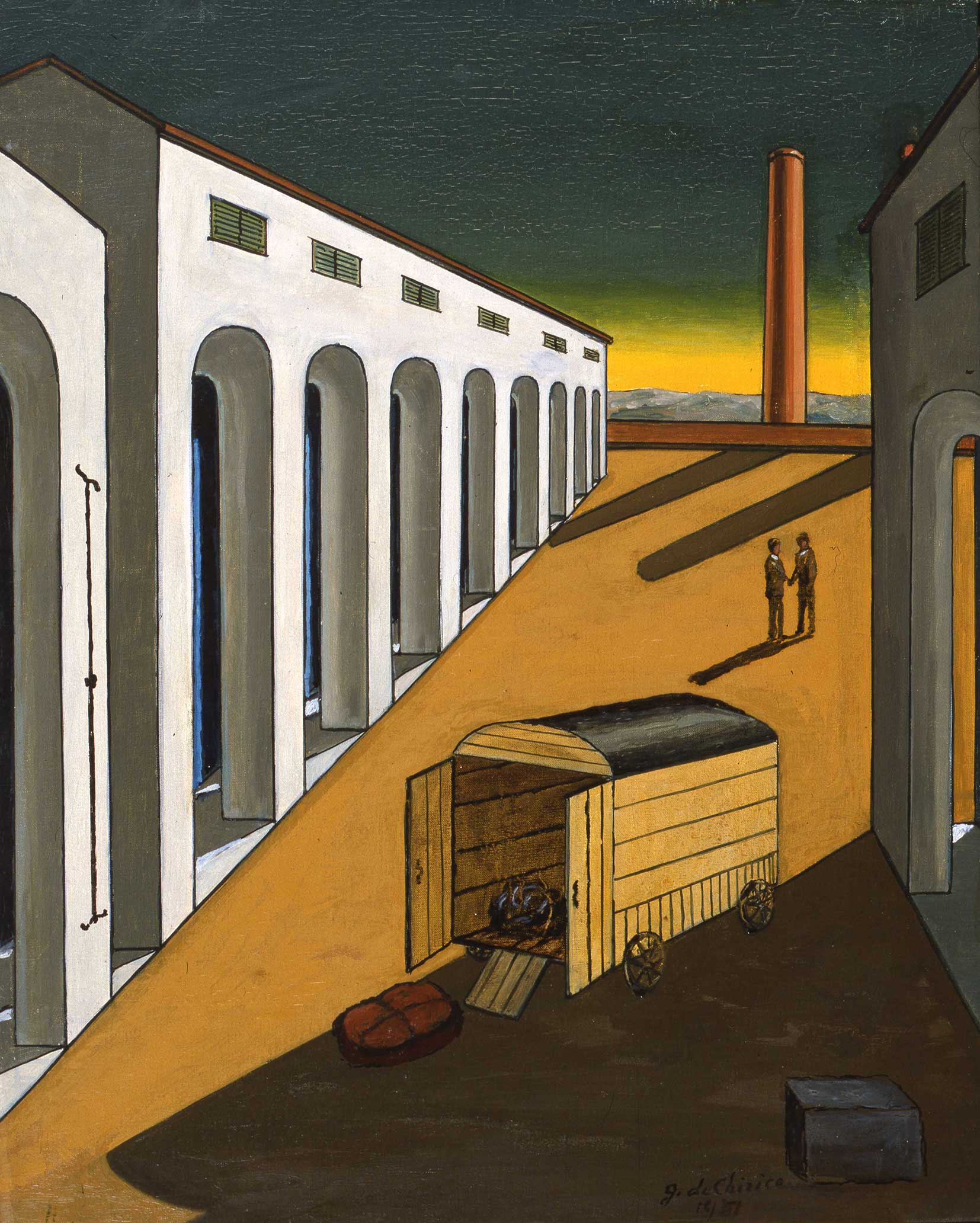 Arrival of the Moving Van, c. 1965 (signed “1951” Oil on canvas 50 x 40 cm Fondazione Giorgio e Isa de Chirico Collection, Rome (Env.60)
Arrival of the Moving Van, c. 1965 (signed “1951” Oil on canvas 50 x 40 cm Fondazione Giorgio e Isa de Chirico Collection, Rome (Env.60)
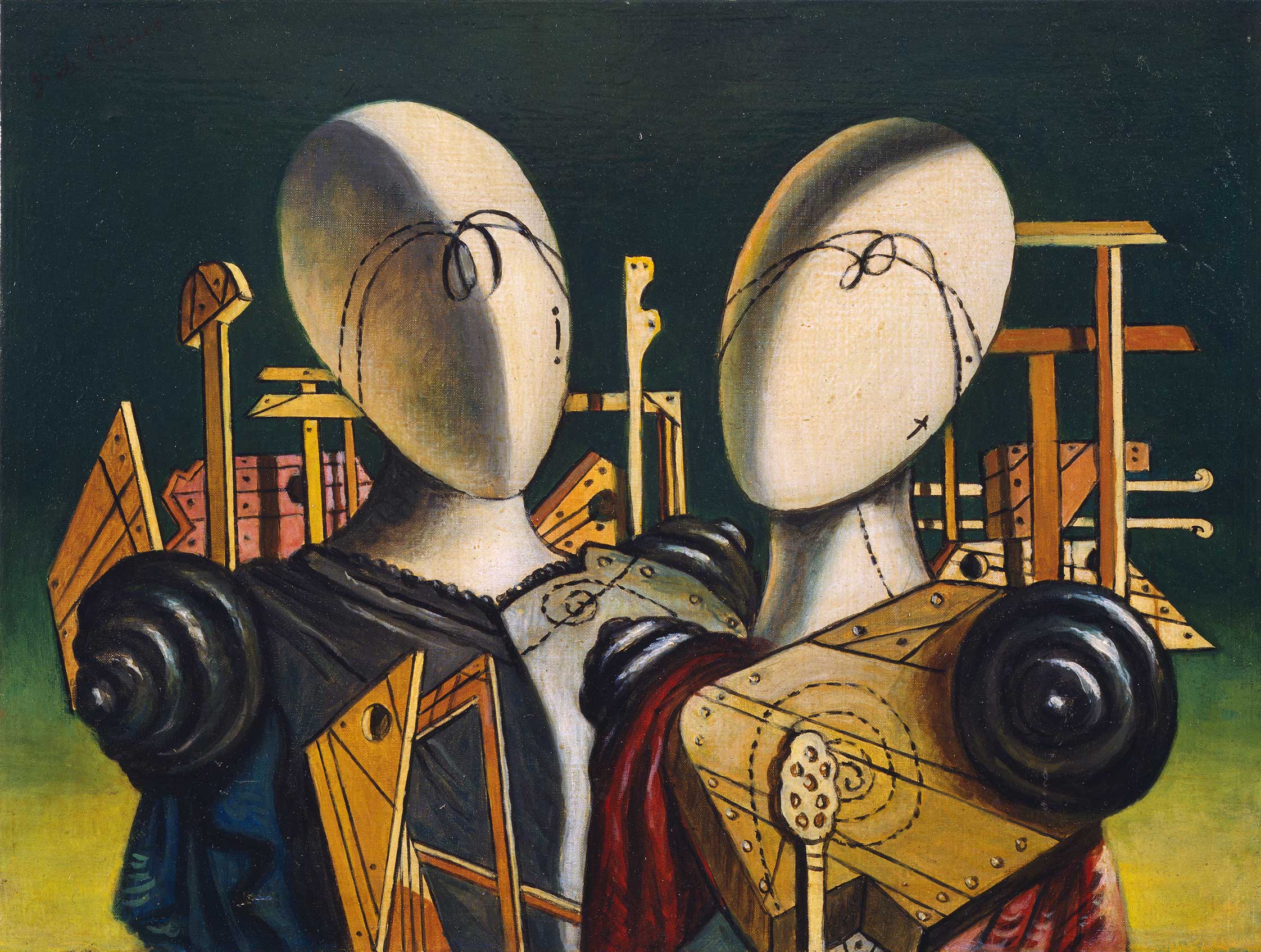 Hector and Andromache, 1970 Oil on canvas 30 x 40 cm Fondazione Giorgio e Isa de Chirico Collection, Rome (Env.3)
Hector and Andromache, 1970 Oil on canvas 30 x 40 cm Fondazione Giorgio e Isa de Chirico Collection, Rome (Env.3)
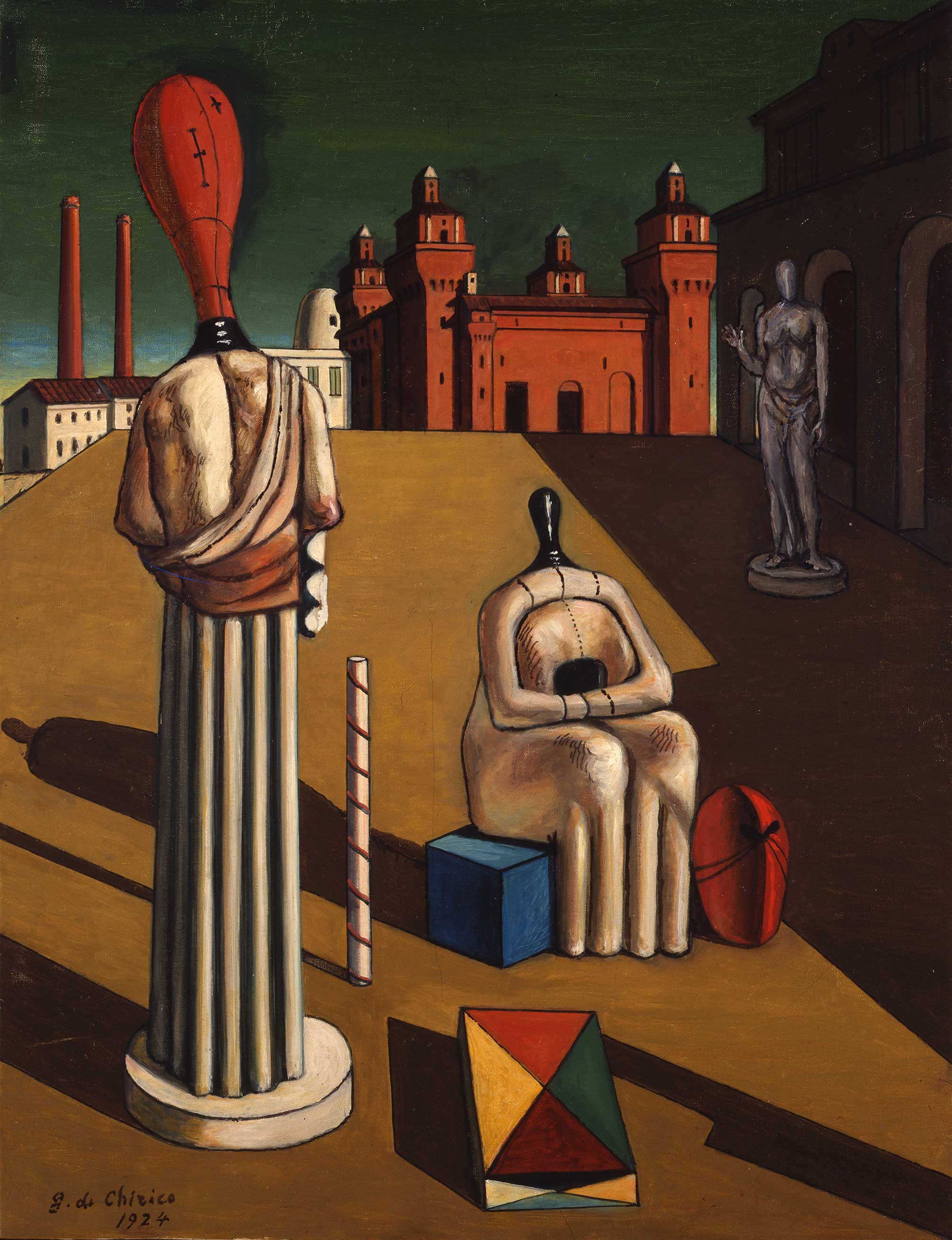 The Disquieting Muses, c. 1974 (signed “1924”.) Oil on canvas 65 x 50 cm Fondazione Giorgio e Isa de Chirico Collection, Rome (Env.138)
The Disquieting Muses, c. 1974 (signed “1924”.) Oil on canvas 65 x 50 cm Fondazione Giorgio e Isa de Chirico Collection, Rome (Env.138)

Coffee was served with much splendor at the harems of the Ottoman palace and mansions. First, sweets (usually jam) was served on silverware, followed by coffee serving. The coffee jug would be placed in a sitil (brazier), which had three chains on its sides for carrying, had cinders in the middle, and was made of tombac, silver or brass. The sitil had a satin or silk cover embroidered with silver thread, tinsel, sequin or even pearls and diamonds.
Tuesday - Saturday 10:00 - 19:00
Friday 10:00 - 22:00
Sunday 12:00 - 18:00
The museum is closed on Mondays.
On Wednesdays, the students can
visit the museum free of admission.
Full ticket: 300 TL
Discounted: 150 TL
Groups: 200 TL (minimum 10 people)